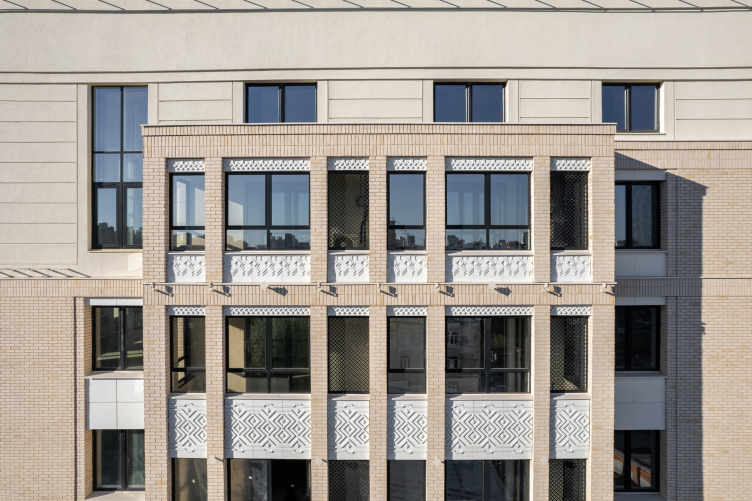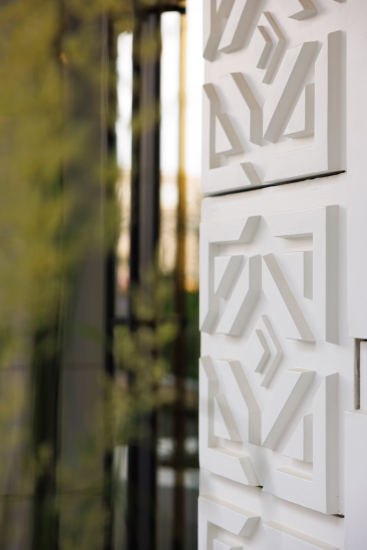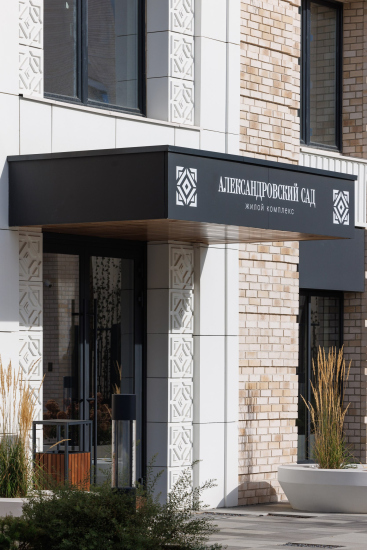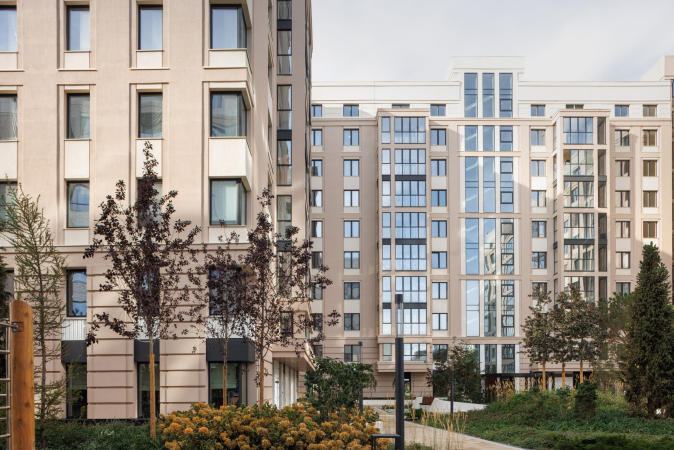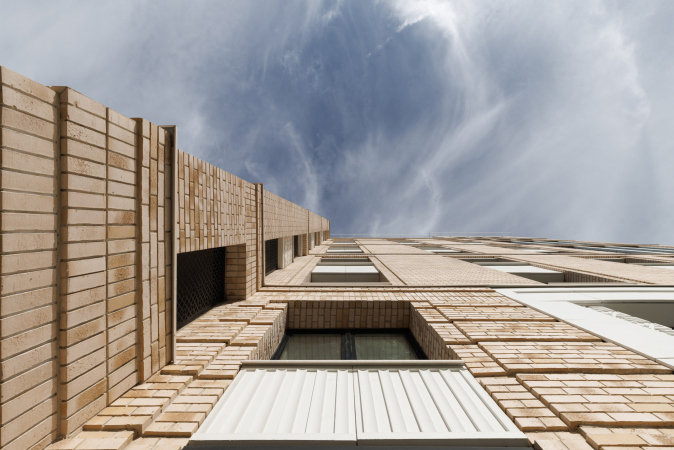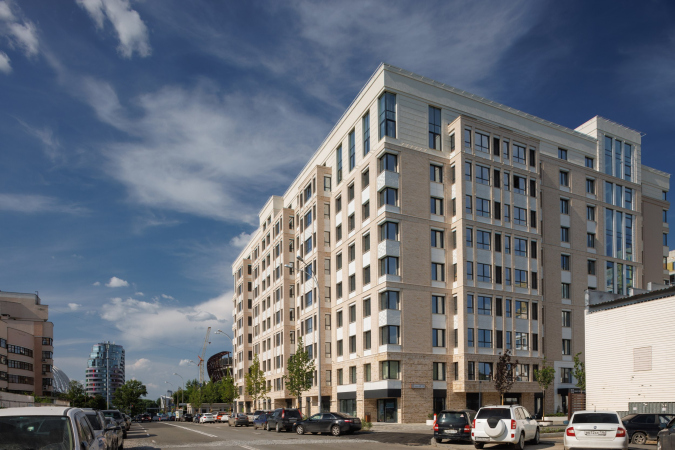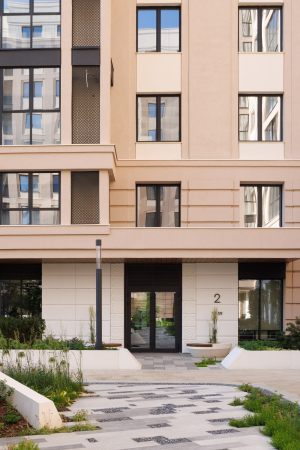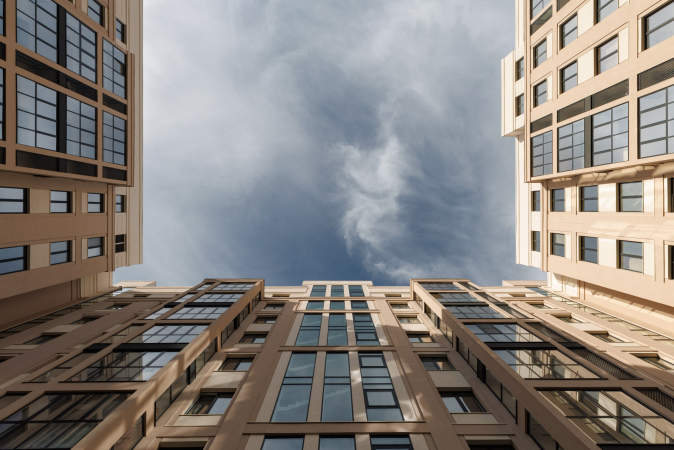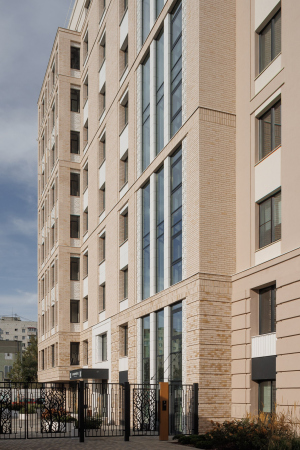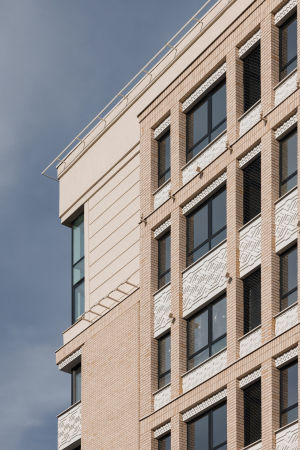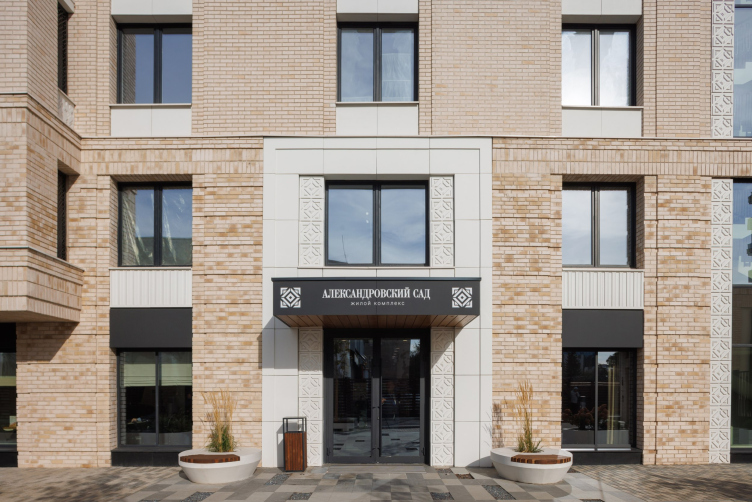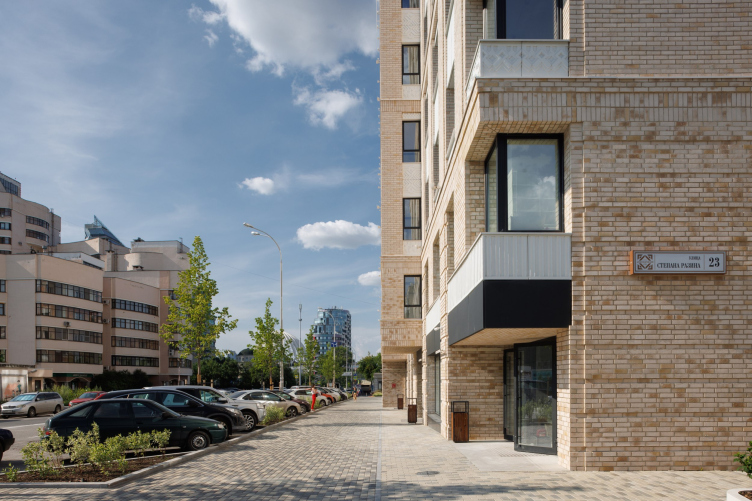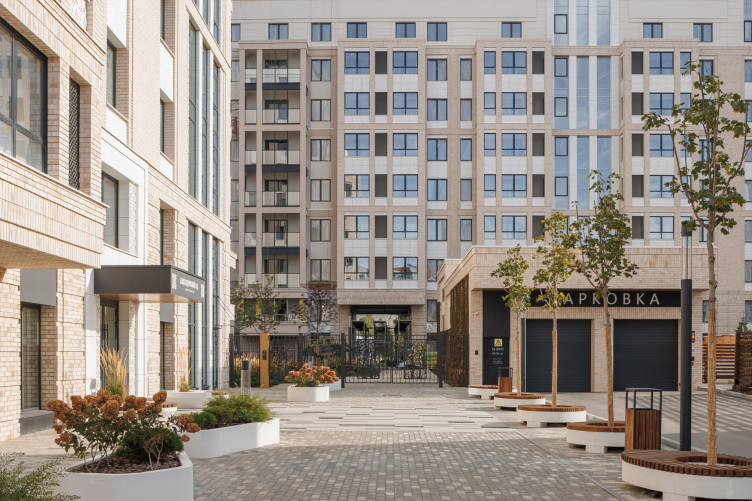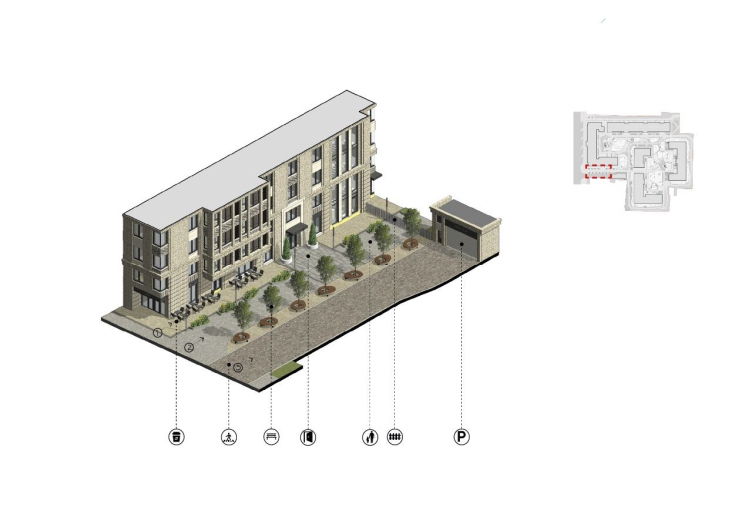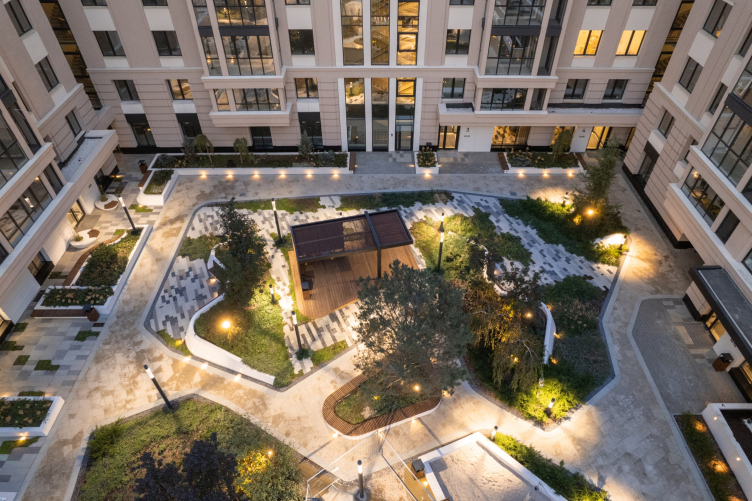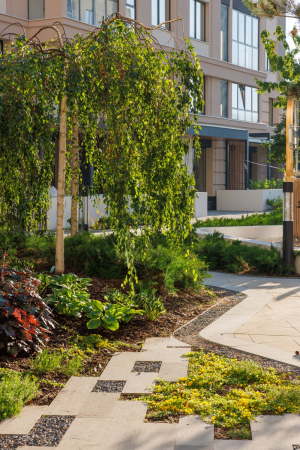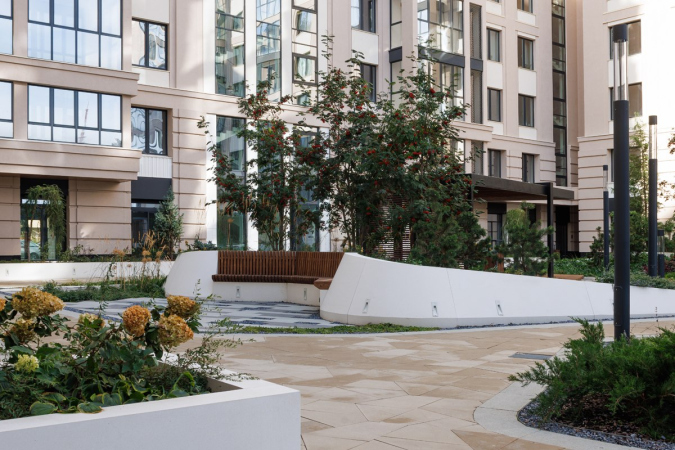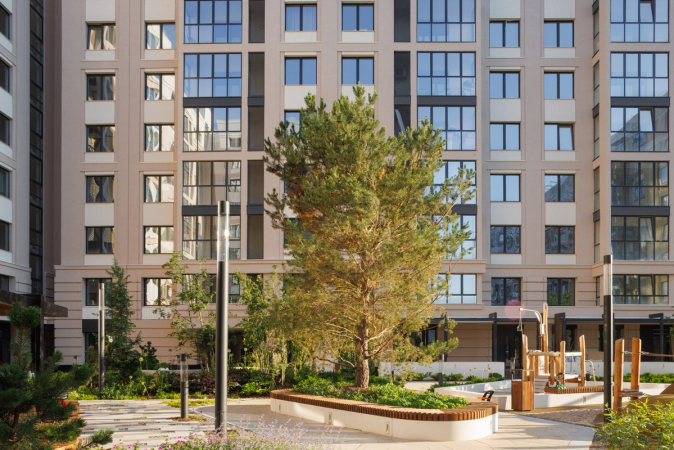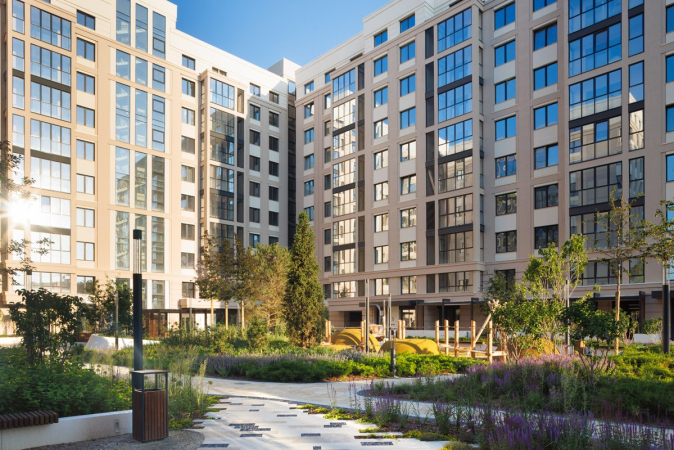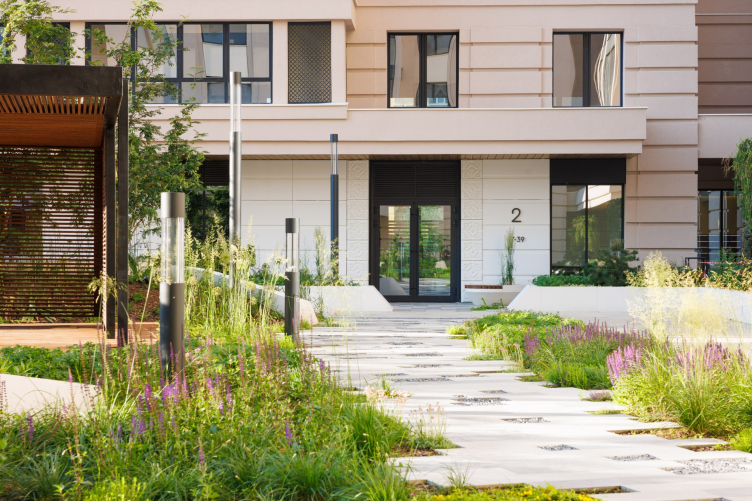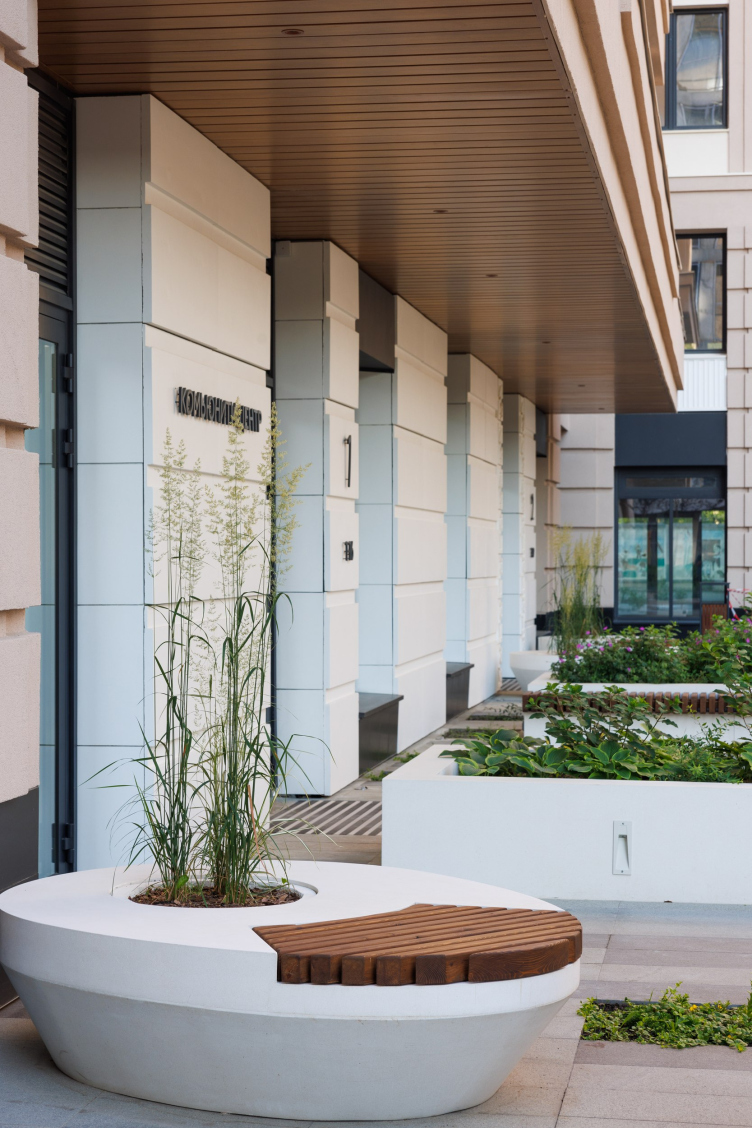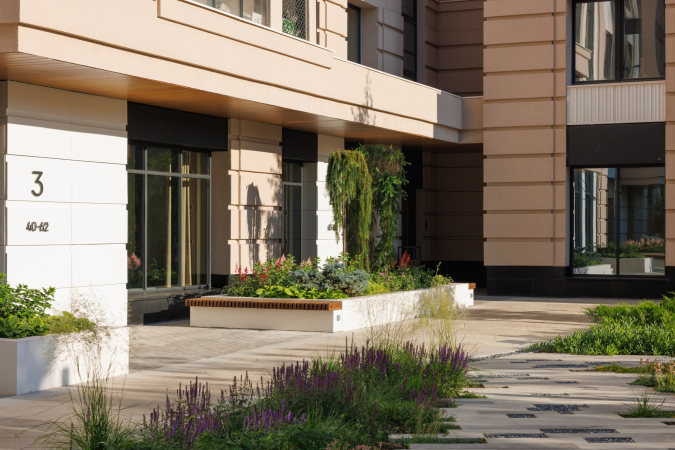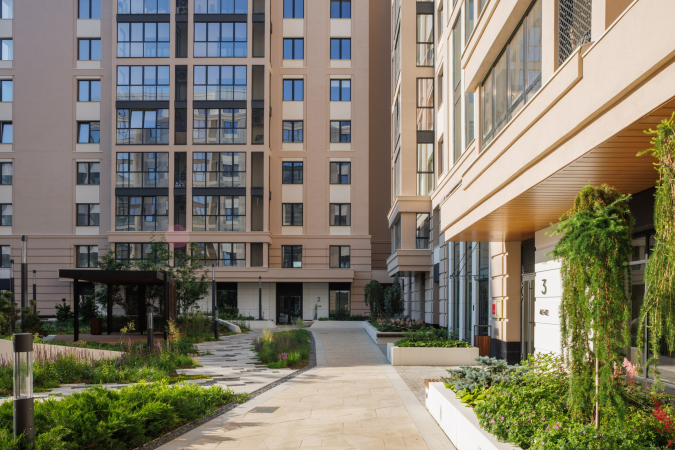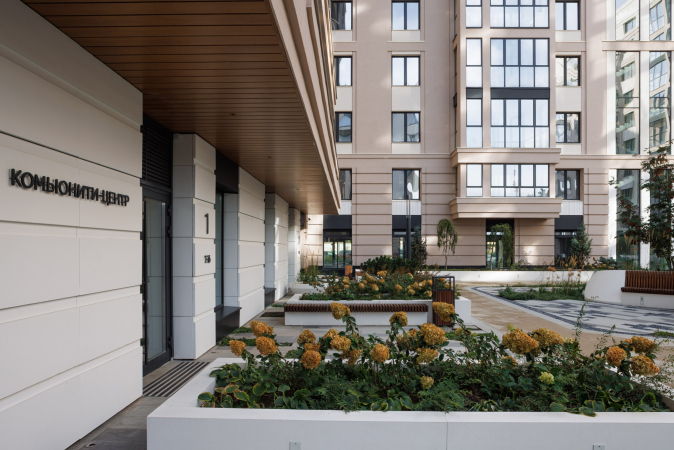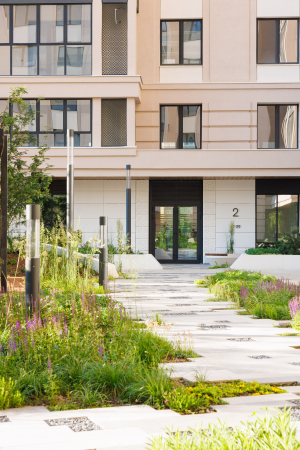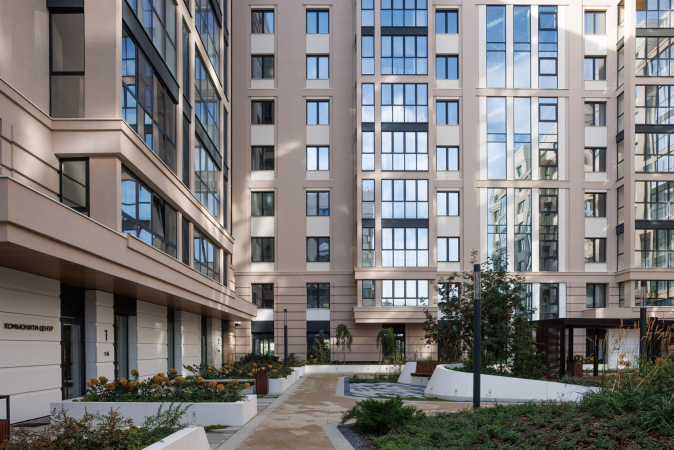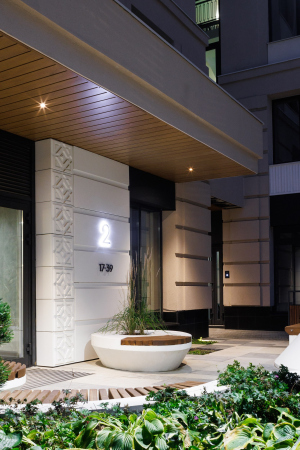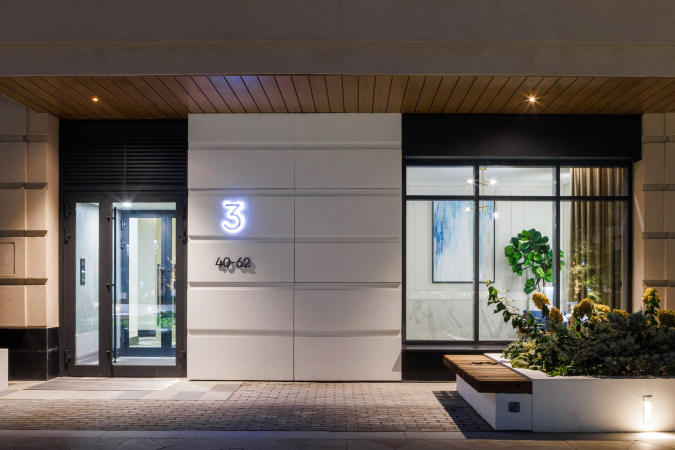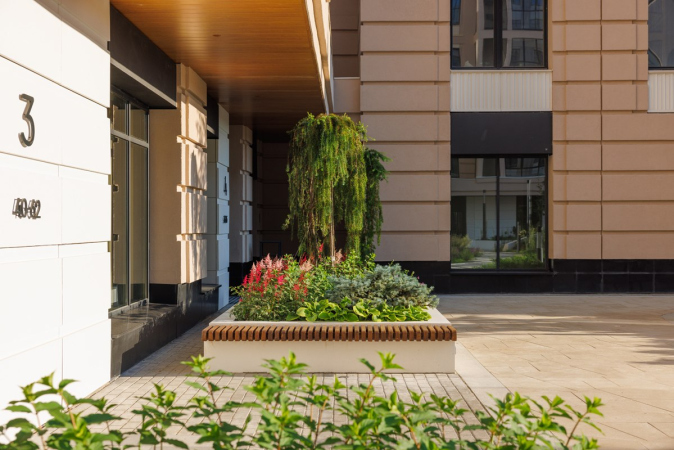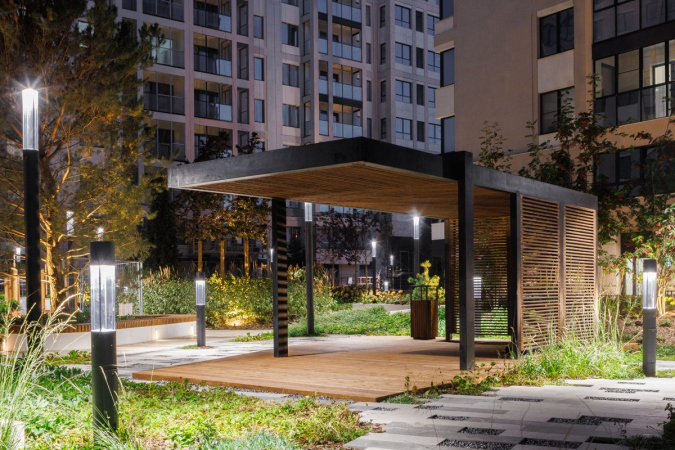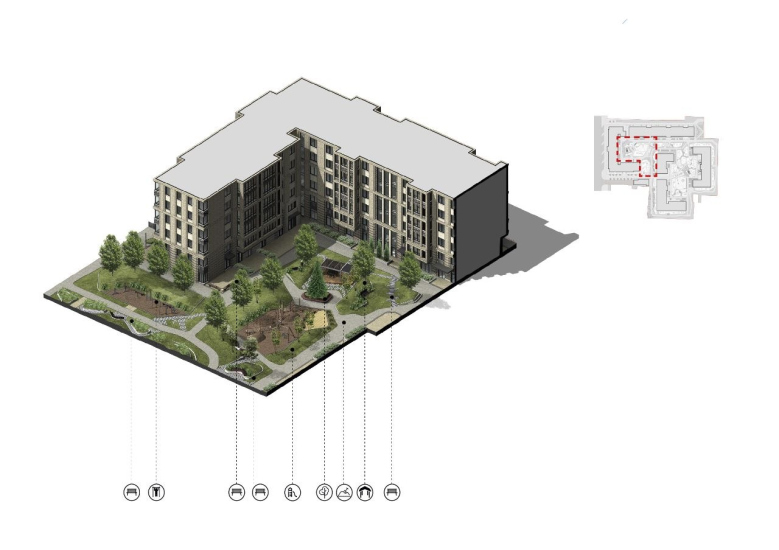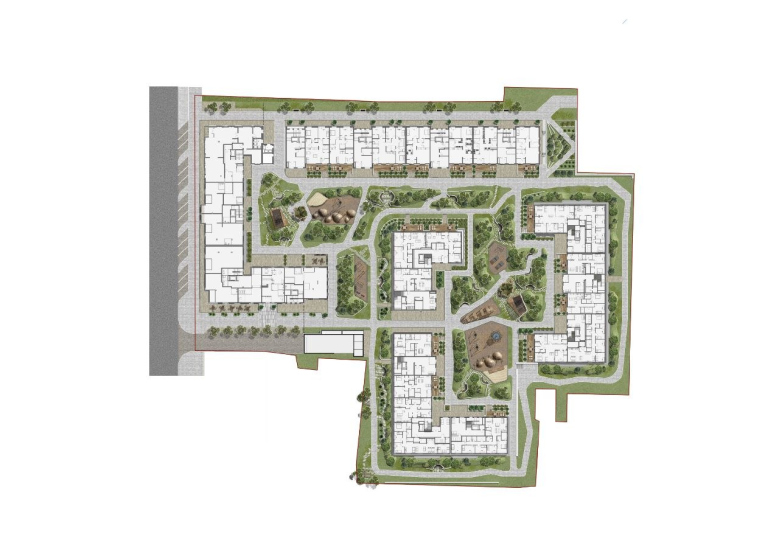Alexandrovsky Garden housing complex
Copyright: Photograph: 01.2023, provided by Forum Group
The relief ornament, based on the motifs of folk embroidery, became the logo of the complex.
In a word, the buildings are moderately ornamental and not very tall – both are the response to their location inside the yard, while the outer contour also includes historical buildings, mainly of the end of the XIX century.
Currently, there are reports about the completion of the houses belonging to the first stage – two “frames” in the west half of the site from the side of Razina Street: at this point, one of the facades of the complex hits the redline. Thus, we can compare the project and its implementation. The outside facades are tiles; stucco is only used in the yard zone.
Alexandrovsky Garden housing complex
Copyright: Photograph: 01.2023, provided by Forum Group
The main message that the report broadcasts, however, is about the completion of the landscaping project of the first stage: the western yard and the boulevard running along the south facade. It is already there on the Yandex maps.
The part of the landscaping project that belongs to the city is relatively small – and it is indeed of the “city” kind, neat and made of stone: the fine pattern of the monochrome white tiles repeats the masonry pattern of the bottom “rock face” tier. Along the boulevard, which branches off Razina street and leads to the car park entrance and the grille of the yard, there are a few large-size trees, surrounded by circular benches, and flowerbeds with white flowing outlines, vigorous clumps of hydrangeas and tall panicles of cereals. Everything looks exceptionally well-cared for and cozy in the urban way, like some exemplary fragment on the threshold of one of the blocks of flats.
Alexandrovsky Garden housing complex
Copyright: Photograph: 01.2023, provided by Forum Group
Both here and on the street side, the bottom floors host cafes and shops; some of them are already open.
Alexandrovsky Garden housing complex
Copyright: Photograph: 01.2023, provided by Forum Group
Alexandrovsky Garden housing complex
Copyright: Photograph: 01.2023, provided by Forum Group
The main part of the landscape, however, is in the yard. It rests on the roof of a two-level underground parking garage – as a rule, the main issue with such a roof is that you cannot plant large trees upon it because they have a big root system. Because of this, many architects limit themselves to grass and shrubbery. If they want to make some serious landscape changes, they resort to tall tubs, or, better yet, to making artificial terrain.
Alexandrovsky Garden housing complex
Copyright: Photograph: 01.2023, provided by Forum Group
Alexandrovsky Garden housing complex
Copyright: Photograph: 01.2023, provided by Forum Group
The yard of Alexandrovsky Garden demonstrates the latter solution. After all, the complex has to live up to its name, and trees depicted on grilles clearly would not be enough. There are a few artificial hills; two of them, framed with flexible white barriers, flank the center; the third hill is designed as a large flower bed with a bench tracing its contour, and each has either a really large tree planted in it, or a few trees at once. Thus, it is for a reason that the release calls the yard a park. The list of trees includes ash-berry trees, (the most important) pine tree, a few fir trees, and a weeping birch tree, whose crown is formed by a natural “gazebo”.
All the plants, meanwhile, have been specially selected to fit the local continental climate, so they must live a long and happy life.
The artificial hills merge with prop-up walls and barriers, sometimes rigid and geometric, sometimes flowing. Their architectural character is very tangible, and it organizes the yard space in a very “determined” way. At the same time, sometimes the hills descend quite smoothly to the pavement level, “growing” into the pile pattern, which is jagged, the kind you may see in Moscow’s Zaryadye Park. Vigorous bunches of purple inflorescences sprout between the slabs.
Alexandrovsky Garden housing complex
Copyright: Photograph: 01.2023, provided by Forum Group
Alexandrovsky Garden housing complex
Copyright: Photograph: 01.2023, provided by Forum Group
Closer to the contours, all the houses become more austere, all the lines become straight, and the angles right; in front of each of the entrances, there are exquisite flower beds that feature an inbuilt bench and a small round opening for the cereals.
Alexandrovsky Garden housing complex
Copyright: Photograph: 01.2023, provided by Forum Group
An impression is created that for different groups and different kinds of plants an individual “carrier” program is proposed. Well, even if that’s not really the case, the casings (pun intended) are very diverse.
Another thing that meets the eye is the difference between the minor architectural landscaping shapes – all these flowing white bands and flowers growing along the jagged edge of the pavement slabs – and the austere facades of the residential buildings of the complex, which are rather governed by reserved contextual classics than all these neo-modernist liberties.
Luckily, the facade and landscaping design was done by the same company – T+T Architects led by Sergey Trukhanov – so, in my opinion, they seem to rhyme quite successfully. It is based on two different themes set here: the city and the park. The houses, as well as the landscaping on the outer perimeter, are of the urban type, while in the center of the yard there is a certain “natural enclave” that consists of hills and pine trees. Meanwhile, as it gets closer to the houses, it “collects itself” and turns into a garden – it even has more garden plants in it, like the above-mentioned hydrangeas. Only the cereals “stand guard” before the entrances – and they should, given their slender sharp silhouette.





